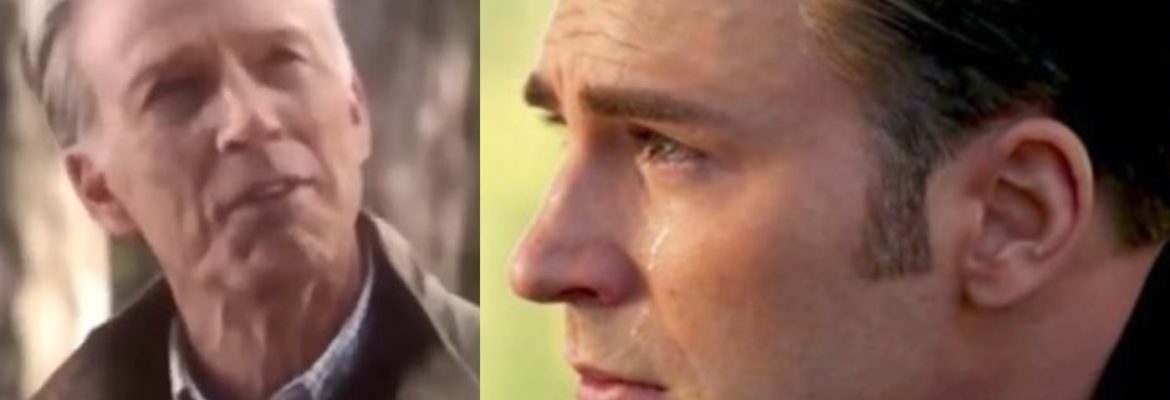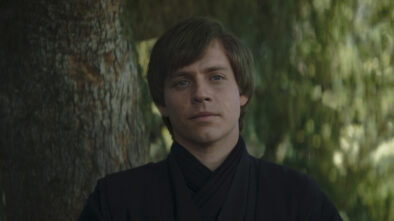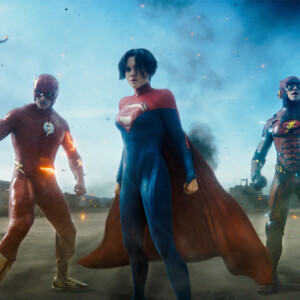How Lola VFX Turned Chris Evans Into A 119-Year-Old Captain America
Lola VFX, the vendor behind all de-aging and aging effects in Marvel’s cinematic universe, hit their high-point this year with Avengers: Endgame. The film is a “greatest hits” package of Lola’s work in the MCU to date with the creation of an emaciated Tony Stark, a fun Cap vs Cap fight, and the de-aging of John Slattery, Michael Douglas, and Stan Lee. But the scene that has generated the most interest is Lola’s aging of Chris Evans into a 119-year- old Captain America.
In the comics, Captain America’s super-soldier serum eventually wears off resulting in his rapid aging into a normal 90-year-old body. As a result, Rogers retires and Sam Wilson becomes the new Captain America. Endgame tackles this same storyline, albeit in a different way. In the film, Steve Rogers’ aging is the result of traveling back to the 1940s after returning the Infinity Stones, and living the life he never had with Peggy Carter. The storyline brought Rogers’ arc to a satisfactory conclusion and resulted in a poignant scene involving handing over his shield to Wilson. Selling this sequence, which underpinned the whole of Rogers’ arc throughout numerous films, all hinged on Lola’s ability to convincingly age Chris Evans.
Lola, once again used compositing in Flame to create their near photorealistic effects. But this time, they also had help from facial prosthetics created by Legacy Effects. Trent Claus, who was Lola’s visual effects supervisor on Avengers: Endgame, explained the process of bringing 119-year- old Captain America to life.
Look Development
De-aging an actor is a lot simpler than aging for one simple reason: photographs and footage of an actor’s earlier age can be used as a reference. With aging, particularly dramatically aging an actor like Chris Evans, required a bit of experimentation. “For this one with Chris, we had a very long period of look development where we tried lots of different ages and styles of aging,” explained Claus to Befores & Afters. “One problem we run into a lot with aging is that everybody has their own idea of what happens to you when you age based on your own experience, what happens to your own face, and what happened to your parents’ faces, and things like that…Here it’s a lot more subjective.”
Lookdev is quite an involved process, and a number of parameters had to be followed in order to arrive at the right look for ‘Old Man Steve Rogers.’ His digital and prosthetic transformation had to still look like him, but at the same time be in line with his character. The super-soldier serum that transformed Skinny Rogers into Captain America in The First Avenger would have allowed him to live longer and also retarded the aging process somewhat. ” I think the technical age we came up with was 119-years-old he’d be at that point in time,” said Claus. “But with the serum, he was supposed to land roughly 85 to 95, somewhere in that range – younger than what a normal human would have looked.
“He had to look still super hero-ey. You don’t want the audience to feel sorry for him. You want them to accept him as an older version of Captain America, but still Captain America. So you don’t want him to look frail. But yet you want him to look really old, so it was a really fine line to find there.”
Prosthetics and Tracking Dots
By the time filming commenced on the ‘Old Man Steve Rogers’ scene, an approved look had not been finalized. Nonetheless, production pushed ahead, and Legacy Effects created prosthetics for Evans. “[H]e was wearing a bald cap with wig,” said Claus. “And then he was wearing a prosthetic on his neck. Everything from beneath the chin to the collar of his shirt is a prosthetic.”
Halfway there pic.twitter.com/frBsW4x4hQ
— Chris Evans (@ChrisEvans) May 10, 2019
In the end, most of the prosthetics for creating old Captain America were discarded in favor of compositing in Flame. It was a process similar to aging Peggy Carter in Winter Soldier. In that film, VFX had initially considered using prosthetics but discarded them in favor of compositing in Flame. Even though the final result was convincing, and helped earn the film an Academy Award nomination for VFX, Peggy’s neck was not entirely convincing. As a result, the prosthetic work for Evans neck was retained, and the rest of his face was aged in Flame.
Compositing required hiring an older actor, Patrick Goldman, as Evans’ older double. Evans would perform all his scenes in prosthetics while Goldman watched on. Then Goldman, who wore tracking dots on his face, would duplicate Evans movements as best he could, including mimicking Evan’s delivery of dialogue.
“I would direct him to look a little more to his left, look a little more to his right,” explained Claus. “Hold this pose, hold that pose, that sort of thing. Try and get the angles and things that we need so that we would have that on set reference for lighting and textures.”
Light Rigs and Compositing in Flame
Then Claus took the lighting references from Goldman’s performance on set for use in a light rig in Lola’s studio. The light rig–dubbed the ‘egg’ by Marvel–is basically a sphere of LED lights and pin spots that are programmed to emulate the static or dynamic lighting on set. Goldman sat in the center of the ‘egg’ to have his face scanned “to get some higher resolution textures, and then also to catch any angles that we might have missed on set, which always happens. We used any and all of those materials that we could to come up with the final look of old Cap.”
This process allowed Lola to capture some angles of Goldman missed on set, and add some higher resolution textures to help create the old-age look of Captain America. The footage of Evans on set, and the combination footage and light rig performance of Goldman created a main (or Chris) plate, and Patrick plate respectively. Goldman was then digitally mapped onto Evan’s face.
It’s easy to forget how difficult compositing work is. But merging Goldman’s older skin onto Evan’s face gave Old Cap a far more convincing appearance, even more so than old Peggy Carter a few years earlier.




